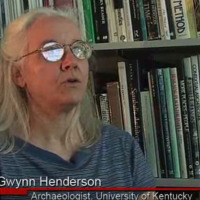Moundbuilders, Mathematics, and Astronomy
The mound-building cultures of the Ohio River Valley, like their counterparts across America, had a close relationship to solar and lunar movements and often arranged their earthworks to interact with at least one astronomical event throughout the year. Solar and lunar eclipses, and lunar cycles, were particularly important for religious, and, as farming grew more popular, agricultural purposes.
A complex knowledge of mathematical concepts such as geometry is evident throughout the Woodland and Late Prehistoric periods, although the Hopewell culture has received more attention in this field than either the Adena or Fort Ancient cultures. The discovery of a standardized unit of measurement across many different Hopewell mound sites, identified by William Romain, has led archaeologists and theorists such as James A. Marshall, Ray Hively, and Robert Horn to propose a “Hopewell school of mathematics”, although this view tends to dismiss, or undervalue, the accomplishments of the remaining cultures.
